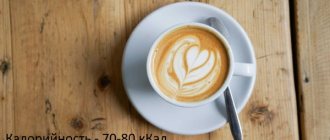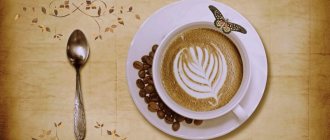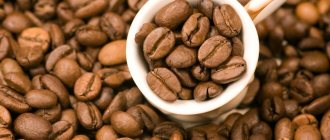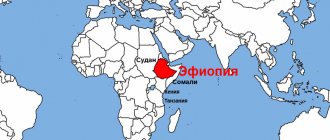Do you like coffee? A negative answer to this question is extremely rare. This drink, whose history goes back more than 700 years, is popular in all corners of the globe. The number of varieties and types of its preparation cannot be counted. Every country has traditions associated with it, cooking secrets that allow it to impart a special taste and aroma.
History of coffee
And it all started... with a goat. More precisely, from goats. The most ordinary goats, whose instinct told them that if they eat fruits from a certain tree, then they have more strength and can jump higher. And then it was up to the observation of the Ethiopian shepherds, who also decided to try these fruits by mixing them with animal fat. At first they were popular among nomads, who were given strength on long journeys.
Then Sufi monks began to drink a drink made from coffee beans. And already in the 15th century, along with the spread of Islam throughout the eastern countries, it became known everywhere and quickly gained popularity. The ban on alcohol adopted among Muslims played a significant role in this. Coffee acted as an alternative to wine, since it was not prohibited by religion, and its tonic effect on the body became an excellent substitute for getting drunk.
Gradually, from the countries of the East, coffee spread throughout the world. This process was inevitable, despite the strict bans on the export of grains to other countries that existed at that time, since its popularity attracted the attention of everyone, including smugglers. It was thanks to them that plantations appeared first in India, then in Suriname, Guyana, Brazil...
Coffee shops began to open in European countries and the United States, which instantly gained popularity among the population. Coffee turnover in total world trade is currently in second place after oil.
Interesting Facts
Over the centuries, this drink has been extensively studied by both doctors and scientists from other branches of science, and they have collected many interesting facts about it:
- caffeine in small doses is beneficial, in large doses it is harmful, and to consume it in a lethal dose, you need to drink about 100 cups;
- To achieve an optimal tonic effect, a healthy adult needs about 500 mg of natural coffee per day;
- The most caffeine is in light roasted beans, especially if it is Robusta, in which its content is 2%, twice as much as in Arabica;
- The amount of caffeine can be easily determined by taste: the more bitter it is, the more it will invigorate, too much of it can cause hallucinations, but in small quantities it can provide additional benefits by enhancing the effect of a number of painkillers on the body (paracetamol, aspirin, etc.) .);
- It is better to brew coffee in water, the temperature of which is very close to boiling - 95-98 degrees, but not in boiling water;
- The shelf life of unroasted beans is about a year; after roasting, they begin to lose their positive qualities within two days;
- depending on the variety, the number of aromatic compounds can reach 800, various antioxidants – 300, and the number of different chemical compounds and substances can exceed 1200 species;
- drinking coffee promotes rapid fat burning during intense physical activity (and therefore, when drinking more than 5 cups, athletes may have problems with the International Olympic Committee regarding doping), and coffee itself (without additives in the form of milk, sugar, etc.) has no calories at all does not contain;
- Initially, only natural coffee existed, and instant coffee was the contribution of Europeans; it was invented by a native of Belgium, George Washington, in 1906;
- The country with the record for consumption is Finland, with 12 kg of grains per year per inhabitant.
The cost of coffee varies greatly. The most expensive and exotic is considered to be kopi luwak, made from grains obtained in an original way: they are taken from the excrement of the palm marten - musang, washed and dried. It is not known who and when came up with this method of preparation, but currently it is considered the most exquisite, and its price reaches $1,200 per kilogram.
FAQ
What beans are suitable for making coffee with thick foam? The density of the foam in the finished drink depends on the concentration of robusta in the blend and the degree of grinding of the beans. 100% medium or coarse Arabica beans are definitely not suitable for such purposes. Buy a finely ground blend with 30% Robusta and enjoy espresso with foam, as if from an Italian coffee shop.
After coffee from the machine, you have a headache and suffer from tachycardia, what causes this? This reaction of the body is provoked by a high dose of caffeine. If you have such symptoms, avoid Robusta-based blends in favor of 100% Arabica. An invigorating drink made from this variety of grains will improve your mood by charging you with serotonin, without unpleasant reactions from the cardiovascular system.
Can I experiment by mixing coffee beans from different brands? Of course, you can mix coffee beans in different proportions, obtaining new flavor nuances in an already familiar product. Just do not use flavored or caramelized coffee in such mixtures, so as not to spoil the inside of the coffee machine.
Is it worth buying bulk coffee beans? Could be so. But it will be better if you buy the product from a package that was opened in front of you. Buying in bulk also allows you to evaluate the quality of the coffee. Be sure to pay attention to the uniform roasting of the beans and the absence of chips - this indicates the high quality of the product.
How to make white coffee correctly?
Black coffee is a well-known classic of the genre. But lately there may be a section with white coffee on the menu. And all the species listed above are precisely white. If you look into the question in more detail, it will turn out to be nothing more than a drink with the addition of milk, familiar to everyone from childhood. But the methods of preparation and the proportions of the main components will differ, which, in fact, led to the appearance of so many of its types.
Cappuccinos, lattes and flat whites are made with espresso coffee, usually prepared using an espresso machine. When choosing milk, you need to consider its fat content. Beautiful foam from bubbles can also be obtained using skim milk, since it requires milk protein, not fat. But the taste will be somewhat worse, and the texture will be more liquid. Therefore, the best option is normalized milk with a fat content of 3.5%.
It is also necessary to pay attention to the temperature of the added milk. To obtain the ideal taste, you will have to give up the possibility of getting a scalding hot drink, since the temperature of the milk should not exceed 68 degrees. Stronger heating or boiling destroys milk protein, which is the basis of taste; the aroma also undergoes changes not for the better.
What type of coffee is best for a coffee machine?
Several types of equipment are used to prepare the drink. Each unit has its own operating principle, so the raw materials for them will not be the same.
The main types are:
- Grain. It should be purchased for coffee machines with a built-in coffee grinder. There are ready-made mixtures in stores, but you can make your own blend from different varieties of grains.
- Ground. It is suitable for geyser, drip and horn units. Coffee is available for sale already packaged, as well as beans.
- In capsules. The shell contains a mixture of one of the varieties (Americano, espresso, latte, etc.) for preparing 1 serving of the drink in special coffee makers.
- In pods. They are perforated paper bags in the form of tablets filled with coffee powder.
In addition to the method of preparing raw materials, buyers should know the type of drink that they plan to prepare.
There are special blends for making espresso that have a distinctive inscription on the packaging. Most often, the package contains a blend of Arabica and Robusta in different proportions. However, these should not be the caramelized and flavored varieties. You need to choose the right mixture based on your own taste.
For lovers of coffee-based milk drinks (lattes, cappuccinos), there are also special mixes. In this case, the content is chosen by the consumer. But it’s better to combine Robusta with Arabica in a ratio of 70 to 30, dark roast. As a country of growth, you need to choose Brazil, Vietnam, El Salvador or Honduras, where the grain is less acidic.
Cappuccino, latte, flat white... What's the difference?
Cappuccino, latte and flat white are classic preparation options and differ in the proportions of their main components:
- cappuccino: 33% – espresso, 67% – milk;
- latte: 15% – espresso, 85% – milk;
- flat white: 40% – espresso, 60% – milk.
But they also have other differences. Cappuccino originates from Vienna, where it appeared in the 19th century, and its name is associated with the color of the Capuchin monks' robe, which brewed coffee resembled.
But the history of the origin of latte is not so transparent. The Italians claim their authorship, since latte is “milk” in Italian, and when ordering in a cafe, a misunderstanding can easily occur when, instead of the expected drink, the visitor is brought regular milk. The French dispute this fact, as do the Austrians, who mainly point out that the ancestor of the tradition of mixing coffee and milk was their capital, Vienna.
There is also a dispute about the place of origin of flat white, but it is no longer European countries that are involved, but Australia and New Zealand. It is stronger than a classic latte, the foam on it lies in a relatively thin layer, which allows professional baristas to demonstrate the art of latte art.
Selecting the degree of roasting
It is almost impossible to find bean coffee the first time. You need to try, experiment, search. Pay attention not only to the variety, but also to the roasting - it greatly affects the acidity and bitterness of the drink. Any roast is suitable for coffee machines, so the choice depends only on your preferences. Depending on the degree of roasting, it can be divided into light, medium and dark. There are many subcategories, varieties, names, but for beginners it is enough to navigate the three main ones.
Light
It is not found too often in Russia - all because of the sourness that persists. The grains are roasted at 195-210 degrees, the taste is slightly sweet, you can hear the aromas of herbs or a large number of aromatic components. This type of grain preparation is considered weak, and the treatment of raw materials is very careful, which will be appreciated by lovers of environmental friendliness and naturalness. The grains themselves lose 10 to 13 percent of their mass, retaining a large amount of oil inside, while the surface remains dry.
Types of light roasts: cinnamon, light.
Average
Medium roasting refers to the level of grain preparation at which it becomes a pleasant chocolate shade. You can already feel the roasting flavor in it, and the coffee tastes stronger. Prepared at temperatures from 210 to 230 degrees. At this temperature, it becomes more sour, more aromatic, and a slight bitterness appears. The grains themselves are either dry or slightly oily - depending on the degree of heating. More oil is released, so the taste and smell become richer. It is better to start with this type: it is the most balanced. After it, it becomes clearer what you want more - weaker or, on the contrary, stronger.
Types of light roast: American, city, Viennese.
Dark
There are several degrees of this type of roasting, the temperature rises from 230 degrees to 250. At the strongest stage, the grain is almost burned, as a result of which the drink becomes very sharp, the sourness disappears - this type is called French or Italian. The natural smell of coffee is interrupted by the aroma of roasting, and the upper shell of the grain, which increases the release of acid, is burned - so this type is better absorbed by the body. The taste changes from sour to bittersweet, and the grains are very oily.
How to choose?
Currently, you can find a huge range of types and varieties of coffee on sale. In order not to get lost in this variety and choose the best option, you should focus on several parameters.
First you need to decide on one of three options:
- grain;
- ground;
- soluble.
When choosing bean coffee, first of all, you should pay attention to the composition of the grain. It can be either 100% Arabica or a combination of Arabica and Robusta. The first has a more intense and rich taste, the second option contains more caffeine and is more invigorating.
The degree of roasting can be determined by the numbers on the package, from 1 (lightest) to 5 (extreme roasting). The deeper the coffee is roasted, the more flavorful it will be, but it will also be much more bitter than using lightly roasted beans. No more than six months should pass from the moment of roasting, ideally this period should be about 1.5 months.
The second selection criterion is the method in which the drink will be prepared. This can be either a traditional Turk or an espresso machine that has almost become traditional, as well as a number of alternative options: Aeropress, pour-over, French press, drip coffee maker or Chemex.
For each of the listed types of preparation, you can select the optimally suitable beans and grinding type, which is necessarily indicated in the instructions for use for each unit (for example, a French press requires the coarsest grind, and an espresso machine requires the finest). This must be taken into account both when preparing ground coffee from beans yourself, and when choosing a ready-made option in the store. Also, the instructions often contain a step-by-step preparation diagram.
If you are not sure what kind of grinding you need, it is best to buy medium, which is the most versatile.
The main disadvantage of ground coffee is the rapid loss of taste and aroma after opening the package. In addition, you can often find various flavorings in its composition, so when purchasing this product, you must carefully study its composition.
Instant coffee is extremely popular, primarily because of the speed and convenience of its preparation in almost any conditions. It can be sold in granular or freeze-dried form.
To produce a granular product, the coffee concentrate is dried under high pressure, after which it is further flavored. Freeze-dried coffee is dried coffee grounds that have been quickly frozen at the lowest possible temperature to remove any remaining moisture. The resulting mass is subsequently crushed and essential oils are added to it.
Varieties and blends
Alas, the selected coffee blend does not always show its best side when brewed in a coffee machine. By paying attention to some subtleties when purchasing it, you can easily get a drink with the perfect taste.
Robusta or Arabica?
Robusta is a cheaper raw material with a higher caffeine content. When brewed, it forms a strong, bitter and astringent drink with a strong stimulating effect. Mono-varietal Robusta is liked only by a small part of coffee lovers, and the drink obtained by brewing in a coffee machine will definitely not be appreciated by the average buyer.
Arabica is more expensive, due to the difficulty of growing it and the richness of its taste. It is this that gives the drink chocolate, vegetable, and nutty undertones, but due to the characteristics of light roasting, it can be weakly brewed and sour.
For a coffee machine, it is better to choose blends based on Arabica and Robusta, or medium or strong roasted Arabica.
On sale there are grain and ground natural coffee based on 100% Arabica or blends containing from 10 to 60% Robusta.
- Products with a high robusta content are good for making Italian espresso and Americano. The resulting drink will have a dense body, rich taste, pronounced bitterness, strength and a strong invigorating effect.
- Blends with low robusta content are soft and have pronounced vanilla, nutty and herbaceous nuances.
- 100% Arabica is practically not bitter, pleases with its multi-faceted taste and velvety, but is very sour.
The last two options are ideal for making lattes, cappuccinos and other drinks based on coffee beans and milk.
Roasting degree
Weak heat treatment of the beans reveals all the flavor undertones of the drink, emphasizing gourmet and herbal nuances. Due to the inherent sourness, this option is not suitable for espresso lovers, but it is good in combination with cream or milk.
Dark roasting eliminates acidity, but gives the drink pronounced bitterness, astringency, viscous consistency and caramel nuances.
Medium roast coffee is a versatile option suitable for making espresso, latte and cappuccino. Acidity, strength and bitterness are balanced in it, so most buyers like this option.
Rating of the best coffee for cappuccino, latte and flat white
The list is compiled based on the most popular types that are in demand on the Yandex Market online trading platform and have positive customer reviews.
Rating of the best bean coffee
Movenpick Latte Art
Average price – 1050 rub. per 1000 g.
A product consisting of 100% Arabica beans from the famous Swiss brand owned by Nestle. The production is located in Germany, and there is strict multi-stage quality control at each stage of production. The enterprise's experience of more than a century and a half allows us to create an excellent drink in accordance with the best traditions.
Movenpick Latte Art coffee beans
Advantages:
- designed specifically for mixing with milk;
- when prepared without milk, you get a very tasty, strong espresso;
- rich rich taste due to deep roasting;
- delicate, but stable and strong foam.
Flaws:
- not detected.
Cappuccino (Cappuccino)
Average price – 231 rub. for 150 g.
This Vietnamese product is one of the most popular for making cappuccino. It consists of 70% Arabica and 30% Robusta, which provides an excellent tonic effect. The raw materials for its production are supplied from the Vietnamese provinces of Lam Dong and Son La, located at an altitude of more than 1,400 meters above sea level.
Cappuccino (Cappuccino) coffee beans
Advantages:
- bright, rich taste with hints of chocolate, nuts and creamy notes;
- pleasant aroma;
- affordable price.
Flaws:
- contains flavorings;
- not suitable for preparation in coffee machines.
Empire Tea Latte Macchiato
Average price – 350 rub. for 250 g.
The domestic product is produced with French roasting, in which the beans are heated to 240 degrees. This allows you to prepare a fairly strong drink from them with a dense, pleasant texture and rich taste.
Empire Tea Latte Macchiato coffee beans
Advantages:
- Russian-made goods;
- good taste;
- optimal packaging.
Flaws:
- unattractive packaging design;
- contains flavorings.
Madeo Cappuccino
Average price – 569 rub. for 200 g.
The product from a Russian manufacturer has a milky taste with a slight sourness and slight bitterness, which makes it ideal for cooking in combination with milk. Made from 100% Arabica coffee, medium roast.
Madeo Cappuccino coffee beans
Advantages:
- excellent aroma;
- rich taste;
- convenient packaging: 200 or 500 g.
Flaws:
- contains flavorings.
Vietdeli Cappuccino
Average price – 1056 rub. for 500 g.
This Vietnamese-made product has already gained popularity in its homeland, and in recent years it has been gaining more and more fans in Russia. It has a rather complex composition: it is based on Arabica, to which Robusta and Mocha are added. The caffeine content is about 1%.
Vietdeli Cappuccino coffee beans
Advantages:
- excellent taste and aroma;
- reliable vacuum packaging that protects the grains from exhalation.
Flaws:
- high price;
- not easy to find in stores.
Rating of the best instant coffee
Aristocrat Cappuccino
Average price - 156 rubles. for 300 g.
Product from a Russian manufacturer in soft packaging and convenient packaging of 300 grams. It has a wide palette of flavors: classic, vanilla, chocolate, amaretto.
Aristocrat Cappuccino
Advantages:
- ease of preparation;
- affordable price;
- products of domestic producers.
Flaws:
- the taste is not bitter enough, more like cocoa;
- The composition contains dyes, flavors, coconut oil, and an anti-caking agent.
Latte French Vanilla
Average price – 765 rub. for 200 g.
Another Russian-made product that is popular among fans of instant drinks. It contains a range of vitamins, minerals and trace elements, including the selenium source lalmin and zinc citrate, which provide powerful antioxidant effects.
Latte French Vanilla
Advantages:
- rejuvenating effect on the body;
- improvement of skin and hair condition;
- neutralization of free radicals;
- strengthening the immune system.
Flaws:
- taste is not bright enough;
- high consumption;
- high price.
Nescafe Cappuccino with milk and sugar
Average price – 410 rub. for 225 g.
The product from one of the most famous manufacturers is very popular and in steady demand. Many years of experience determines high control over product quality at all stages of its production. Raw materials are supplied from Colombia.
Nescafe Cappuccino with milk and sugar
Advantages:
- good taste;
- thick strong foam.
Flaws:
- contains flavorings and stabilizers;
- rarely found in stores.
HEARTS Cappuccino Amaretto
Average price – 650 rub. for 1 kg.
The product from the German manufacturer TSI GmbH & Co with the exquisite taste of Amaretto liqueur is packaged in a reliable sealed bag made of multi-layer foil, which protects it from loss of taste and smell. Large, economical packaging at an affordable price makes the purchase even more enjoyable.
HEARTS Cappuccino Amaretto
Advantages:
- rich taste and aroma;
- thick texture;
- high strong velvety foam.
Flaws:
- contains flavorings, stabilizers and emulsifiers;
- rarely found on sale.
Bellarom Cappuccino Vanilla
Average price – 500 rub. for 200 g.
Instant cappuccino with vanilla flavor from the German company Bellarom is made from selected Arabica beans, distinguished by high quality roasting. The product is produced under strict quality control and packaged in a tin.
Bellarom Cappuccino Vanilla
Advantages:
- pleasant, rich taste and aroma;
- thick foam;
- strong enough;
- made without added sugar.
Flaws:
- uneconomical consumption;
- high price.
Rating of the best capsules for coffee machines
Nescafe Dolce Gusto Cappuccino
Average price – 889 rub. for 48 capsules.
To prepare the drink, you need to use two capsules, one of which contains natural roasted coffee, and the second - whole milk powder. A mixture of Robusta and Arabica gives the necessary strength, and the special features of the preparation in the machine provide a strong elastic foam and an attractive appearance.
Nescafe Dolce Gusto Cappuccino capsules
Advantages:
- classic balanced taste;
- rich aroma;
- long shelf life – 2 years.
Flaws:
- milk may not completely dissolve;
- high price;
- Suitable for capsule coffee machines only.
MUST Cappuccino
Average price – 259 rub. for 10 capsules.
One capsule of this moderately strong drink, made from medium-roasted beans, contains both milk and coffee. A special technology for creating high-quality vacuum packaging protects individual components from interaction with each other, which could lead to a change in their properties or taste characteristics.
MUST Cappuccino capsules
Advantages:
- delicate taste;
- ease of preparation.
Flaws:
- Suitable for Nespresso Original system only;
- insufficiently pronounced taste and aroma in comparison with traditionally prepared coffee.
Absolut Latte Macchiato capsules
Average price – 686 rub. for 32 capsules.
For preparation, two capsules are needed: one with fried finely ground grains weighing 6 grams, and the second with whole milk powder weighing 15 grams.
Absolut Latte Macchiato capsules
Advantages:
- pleasant soft taste;
- Suitable for standard Dolce Gusto capsule machines;
- goods of a domestic manufacturer;
- economical cost.
Flaws:
- unstable foam;
- Sometimes you come across defective leaking capsules.
Dolce Gusto Latte Macchiato with caramel flavor
Average price – 350 rub. for 8 capsules.
A Spanish-made product with a pronounced caramel flavor is suitable for preparation in standard capsule machines. It has a medium strength.
Dolce Gusto Latte Macchiato with caramel flavor capsules
Advantages:
- soft, bright taste;
- rich aroma.
Flaws:
- The taste of coffee is weakly expressed, it is interrupted by shades of milk and caramel;
- contains unnatural ingredients: flavorings, stabilizers, etc.
The best coffee brands for your coffee machine
Supermarkets and specialty stores sell a variety of coffees from almost all brands representing the industry's largest producers.
Lavazza Caffe Espresso
Expensive coffee from the Italian brand is made from Arabica beans supplied by farmers from Central America and Africa. Roasting is done only by hand, which allows you to achieve harmony and balance in taste, as well as a subtle aroma. The products are packaged in reliable vacuum packaging with a sealed valve. The grain is carefully selected for shape and color and can be used to prepare any mixtures.
Although the odor is weak when opening the bag, the qualities of the coffee are revealed during brewing. The low foam is stable, the color of the liquid is rich and dark. The variety is recommended for both manual brewing and use in a coffee machine.
The drink has a long aftertaste. Its sourness is not pronounced, but not to everyone’s taste.
Egoiste Noir
Despite the not the highest price, this German brand belongs to premium coffee. The manufacturer has appeared on the market recently, but its product range includes freeze-dried mixtures in granules, instant and grain mixes.
“Egoist Noir” is made only from Arabica beans grown in Kenya. The beans have a medium degree of roasting, which allows you to get a soft drink with chocolate notes. Experts recommend consuming it without adding impurities.
The advantages of this coffee are:
- quality control at every stage of production;
- reliable packaging with a memorable design;
- uniform roasting.
Among the shortcomings, grains of different sizes with occasional crumbs were identified.
Paulig Espresso Barista
The Finnish producer purchases raw materials for this coffee from Brazilian plantations. Medium roast guarantees the softness of the resulting drink. A blend of 85% Arabica and 15% Robusta suitable for a variety of brewing methods.
The advantages of the blend include:
- brightness and richness of taste;
- pleasant long aftertaste;
- versatility in cooking.
However, not all beans are roasted evenly, which slightly reduces the brand's rating among coffee fans.
Jardin Dessert Cup
When preparing this mix, the manufacturer used 5 varieties of Arabica beans. Thanks to this blend, the drink acquires a creamy taste with a hint of honey. Due to the dark roast, the best way to prepare it is in a Turkish oven or using a French press. But for fans of milk-coffee cocktails, it is better suited than others: the rich, stable foam and caramel taste will surprise everyone. If you prepare espresso, it is recommended to dilute it with cream, which extinguishes excess bitterness.
The advantages of coffee are:
- original blend recipe;
- a combination of drum and convection roasting to reveal flavor nuances;
- several types of packaging that prevent contact of raw materials with moisture and light;
- low cost;
- strength level from 3 to 5.
Mr Viet Arabica
Coffee of Vietnamese origin consists of Arabica beans and comes in a vacuum bag. Its taste has a characteristic moderate bitterness and slight sourness. The beans are prepared according to the French method, so the drink contains shades of chocolate, vanilla and orange peel. The blend is suitable for all types of coffee.
Its advantages are:
- high strength;
- rich taste with unexpressed aroma;
- original packaging.
The resulting espresso goes well with condensed milk.
Bushido Red Katana
To attract buyers, the grains are packaged in a bright red package with hieroglyphs and a Japanese-style design. The raw material for it is Arabica, grown on plantations in Ethiopia and Latin America. The drink obtained from Bushido Red Katana is not bitter, with a slight sourness and a bouquet of aromas. The coffee is suitable for brewing Americano and espresso.
The positive features of the brand are:
- reliable packaging;
- balanced composition;
- uniform roasting and grain size.
Some buyers note that the price is too high.
Kimbo Extra Cream
A blend of this brand, consisting of 80% Arabica and 20% Robusta, appeared on the Russian market recently, but has become popular among fans of strong coffee. It is suitable for lovers of espresso made from medium-roasted kernels. The delicate taste has no astringency or sourness, and the bitterness is not pronounced. The cappuccino is not strong, with a high, persistent foam.
Products are made in Italy. All information in Russian is available on the sticker. Each grain is carefully selected for color and size. Thanks to its softness, grinding occurs in a few seconds.
However, coffee lovers do not like the lack of additional notes in the drink.
What else affects the taste?
Roasting, composition, variety are the three main parameters that determine the taste of coffee, but there are several other subtleties that affect the final properties of the finished drink. Knowing these parameters, you can adjust the strength, acidity and saturation even within one package of beans. The taste is affected by:
- freshness of grain;
- grinding;
- fortress;
- volume.
Freshness is the main parameter when it comes to shades of taste. In stores you can find packages of raw materials that have been standing for several months or even a year. You can drink this kind of coffee, but its taste is unlikely to amaze you with its variety. The countdown does not start from the time of grinding, but from when the grains were roasted. Ideally, it is better to take coffee that was roasted very recently, up to 3 weeks ago. If you are not a snob, then roasting within a month will be good. The permissible shelf life of roasted beans is up to two months; you can drink those that were prepared up to five months ago. Then most of the properties are lost, and the drink turns into a neutral base.
The next significant factor is grinding. It can be different, each degree is suitable for its own cooking method. Usually the recommended grind is indicated on the coffee machine - most often this is a medium and fine type of grinding of beans. The finer it is, the stronger and more aromatic the drink is, and the more stable the cream foam is. If you don’t know what grind to choose, experiment or choose the smallest possible grind.
Important! The darker the beans are roasted, the coarser the grind is recommended for cooking. Most often, advanced establishments recommend the type of grinding depending on the variety and type.
The degree of saturation of the drink also depends on the amount of water passed through the raw material. The more it is, the more the edges of taste blur, but caffeine and strength, on the contrary, increase. A small amount of coffee will please you with its aromatic taste, but will be more sour. Finally, the fortress. Typically, this parameter is adjusted automatically by the technology - you choose how strong you want your coffee to be, and the machine selects the number of beans per coffee serving. Of course, the more there are, the stronger the drink. The strength parameter does not depend on the volume of the drink.











